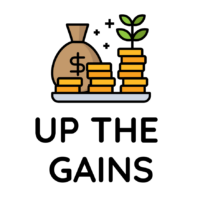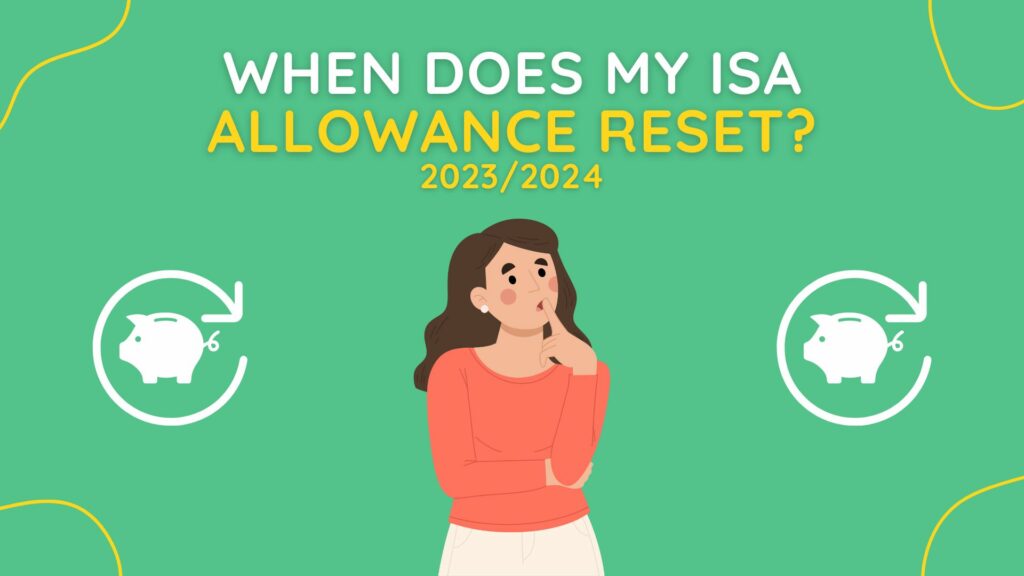
Sammie Ellard-King
I’m Sammie, a money expert and business owner passionate about helping you take control of your wallet. My mission with Up the Gains is to create a safe space to help improve your finances, cut your costs and make you feel good while doing it.
When approaching a new tax year, or even right in the middle of it, it’s always important to know where your ISA stands and when your ISA allowance will reset.
In a nutshell, it resets on 6th April each year, but this may vary depending on the week’s day. It’s 5th April for the 2023/24 tax year.
Depending on the type of ISA, for example, a stocks and shares ISA or Lifetime ISA, things differ by what you can contribute in a tax year.
So why is it important to know all about your type of ISA, and what else do I need to know about when it resets?
Table of Contents
What is the ISA allowance for 2023/24, and when does it reset?
Your ISA allowance resets once each year, and your personal tax allowance for your ISA is £20,000.
If you max out your tax-free contributions, you will not be liable for any capital gains or income tax on the money inside your ISA, including any profits from your investments.
Your personal tax allowance is the same as in 2022/23. It doesn’t look like this will be increased anytime soon, although that could change if a new government existed.
The ISA allowance 2022/23 dates are 5th April which is also the ISA 2022 deadline.
Can I pay into different ISAs as part of my allowance?
Yes, you certainly can. Your allowance can be split across several different ISAs however the final amount must always add up to £20,000 to receive your tax-free benefits.
Types of ISAs you can pay into include stocks and shares ISAs, Junior ISAs, Cash ISAs, Lifetime ISAs and Innovative Finance ISAs.
Remember, if you transfer an ISA it still has contributed to your tax allocation that year. Therefore if you’re planning on removing funds for a short period, it might be worth speaking to your provider to assess the best option.
Do I get £20,000 per ISA?
This is often where people think they should open all different types of ISA, but unfortunately, it’s £20,000 whether you have one or four accounts.
This means if you were to invest in a lump sum into your Cash ISA and Lifetime ISA at the start of the year and regular contributions to your Stocks and Shares ISA throughout the year, you cannot exceed the £20,000 limit.
It’s also worth checking the rules per type of ISA you have as a Lifetime ISA only allows £4,000 worth of contribution per annum to receive the 25% government bonus.
It’s also worth considering how many stocks and shares ISAs you can have as some are restricting.

What happens if I reach the £20,000 limit?
Your provider often will be able to let you know, or they’ll have a section of the app which will show you.
If you overpay into an ISA and go above your contribution, then you won’t receive any tax benefits on those contributions.
There is no penalty or anything like that, but it’s important to note you’ll need to declare any extra payments to the tax man.
If you do not use all of your ISA allowances, they do not carry over into a new tax year. Remember, once 5th April hits, it is a hard reset to zero.
If I already have an ISA, can I transfer it?
Transferring an ISA is not complicated; you can move providers quickly (most are within 30 days), but it can be much faster in some cases.
You’ll often need to submit an ISA transfer form or go directly to your providers and ask them to start the process. Each provider is different.
If you want to transfer within a current tax year, then your total tax year contributions should be moved to keep things simple.
The money you’ve built up from previous tax years can also be moved over, but the amount you wish to move is up to you.
For example, if you had saved £10,000 this tax year, you would need to move the full £10k over.
Then if you had £50,000 saved from previous tax years, you could decide only to move half of that or whatever amount you choose. That’s entirely up to you.
How to make the most of my ISA allowance?
If you can’t reach the £20,000, then fear not. It doesn’t matter if you put £10 in a year. Essentially any contribution is better than none.
You can look at re-budgeting if you’re looking for ways to maximise your allowance in the lead-up to a new tax year.
If you’re keen to reach the limit but are just going to miss out, why not challenge yourself to make a more significant contribution each week or month to see if you can get there?
There’s no badge or medal for reaching the limit, so be sure that whatever you commit is something you can afford.
If you’re doing things super last minute (we all do it), remember you have until 23:59 on 5th April to pay money in.
Be sure, if you’re going to make that last-minute payment, contact your bank to confirm it was in before the new tax year starts.
Conclusion
If you’re worried about anything at all, the best solution is to call your provider and discuss your options. Lots of them have fantastic tools and ideas to help you maximise contributions.
If you’ve managed to max out your tax allowance this year, then fantastic; now you know when my ISA allowance resets each year.
Share this article with friends
Disclaimer: Content on this page is for informational purposes and does not constitute financial advice. Always do your own research before making a financially related decision.



